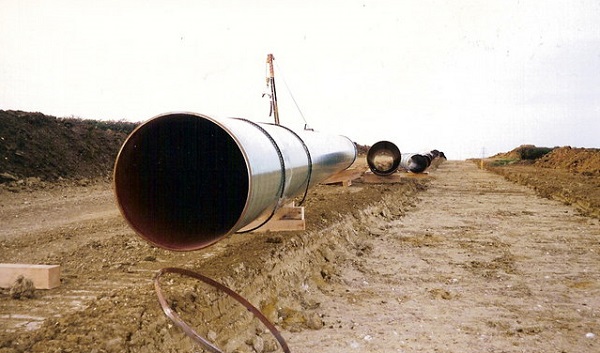A new report commissioned by the U.S. Department of Energy on blending hydrogen into natural gas pipelines – an idea being explored in Germany – suggests it could be a worthwhile strategy to pursue, both now to help take advantage of intermittent renewable energy production and down the road as a means of distributing hydrogen for use in fuel cells.
The Obama administration in the president’s first term earned a bit of reputation as being cool to hydrogen, stemming from outgoing Secretary Steven Chu’s stated view that fuel cell vehicles were unlikely to be viable in “the distant future” because of the distribution hurdle.

In “Blending Hydrogen into Natural Gas Pipeline Networks: A Review of Key Issues,” the authors sound a fairly optimistic note about the possibility of putting the country’s extensive gas pipeline system to work for clean hydrogen’s benefit. They don’t give hydrogen a 100 percent endorsement, but in their review of the issues say that the pluses appear significant enough to warrant further study of exactly what it would take to make happen.
Blending hydrogen into natural gas pipeline networks at low concentrations has the potential to increase output from renewable energy production facilities in the near term. In the longer term, blending may provide an economic means of hydrogen delivery when the hydrogen is injected upstream and then extracted downstream for use in fuel cell electric vehicles (FCEVs) or stationary fuel cells.
How would hydrogen in natural gas pipelines help increase output from renewable energy production facilities? By providing a way to store energy produced at times of slack demand. For instance, peak production for wind farms often comes in the low-use overnight hours. Instead of curtailing output (or inefficiently curtailing other generating systems), that energy could be use to make hydrogen through electrolysis, in which an electrical current splits the H from the H20.
“Relatively low concentrations of hydrogen, 5%–15% by volume, appear to be feasible with very few modifications to existing pipeline systems or end-use appliances,” the report said.
The report outlined a policy direction for encouraging such use:
Conceivably, a credit trading system could apply to natural gas with a specified blend content of renewable hydrogen, paralleling the renewable energy credit system used in the electricity sector. If properly crafted, this credit system could provide an economic incentive for converting otherwise curtailed renewable energy to hydrogen, increasing the energy provided from existing renewable energy production facilities, and enhancing the sustainability of the natural gas supply system.
Taking advantage of the national gas system to move around hydrogen for the purpose of using it in vehicle fuel cells would be more complicated, the report said (thus the suggestion that it could be a “longer term” possibility). That’s because hydrogen is a different animal than methane, and at high concentrations there would be “additional costs … associated with blending and extraction, as well as modifications to existing pipeline integrity management systems.” These costs, the report said, “must be weighed against alternative means of bringing more sustainable and low-carbon energy to consumers.”
The report also explored the idea of putting small amounts of hydrogen into the pipeline and then extracting it through various purification techniques at the other end. The technology seems to exist, but the cost appear quite high, although it could be economically viable at pressure regulation stations.
A PDF of the full report is available online.